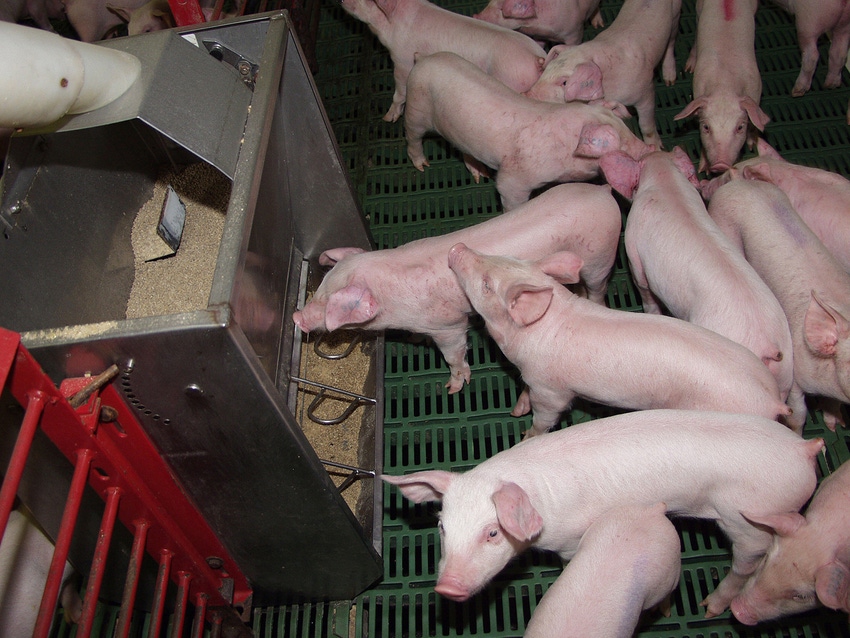Study results underscore need for veterinarians, doctors to work together on antibiotics issue
The findings of this systematic review did lead the team to important concerns about Salmonella and demonstrated that more research in this area is needed.
February 23, 2017

Source: Animal Health Institute
A team of interdisciplinary scientists at the Medical University of South Carolina and the Charleston VA Medical Center Research Service recently reviewed published literature for evidence of a relationship between antibiotic use in agricultural animals and drug-resistant foodborne Salmonella infections in humans, commonly known as salmonellosis. According to the 2013 CDC Antibiotic Resistance Threats Report, two of the 18 pathogens that are of concern in the United States may have a direct link to agriculture — one of them being Salmonella.
Foodborne illness from both drug-sensitive and drug-resistant non-typhoidal Salmonella is estimated to sicken 1.2 million Americans annually (CDC, 2013). The study — conducted by veterinary and nutrition scientists and an infectious disease physician — reviewed 104 articles in the United States, Canada, Denmark, Scotland and Ireland over the past five years and has been published in Critical Reviews in Food Science and Nutrition. Animals included in the reviewed studies were chicken, turkeys, pigs, beef cattle and dairy cows.
The overall prevalence of Salmonella and drug-resistance found in the systematic review aligns with recent National Antimicrobial Resistance Monitoring System reports. The 2013 NARMS report showed that 81% of the Salmonella from human infections carried no resistance to any antibiotic, while Salmonella resistance rates in animals vary by the antibiotic tested. The findings of this systematic review did lead the team to important concerns about Salmonella and demonstrated that more research in this area is needed. For example, six articles showed increased antibiotic resistance in organisms derived from animals, not retail meats, used in conventional farming, versus those from antibiotic-free operations. No studies were found that followed animal-associated antibiotic resistant isolates from farm to retail products.
Lead scientist Kristi Helke, D.V.M., Ph.D. says, “While there were some studies worth noting in our review, it is most apparent that there is a greater need for a more robust data collection system and heightened publication expectations in the U.S. for transparency in antibiotic usage in both animals and humans. There is still much more research to be done. The agriculture and health care industries must work hand-in-hand with the scientific community, government regulatory agencies and human health community in order to ensure safe, humane, and affordable food sources to the public.”
Richard A. Carnevale, V.M.D., vice president for Regulatory, Scientific and International Affairs at the Animal Health Institute, who funded the study says, “On Jan. 1, the agriculture community took an important step in promoting the effectiveness of antibiotics by being in full compliance with new FDA mandates — Guidance’s 209 and 213 — which eliminates the use of medically important antibiotics for growth promotion purposes and requires approval by a licensed veterinarian for all remaining uses in feed through the veterinary feed directive. The proper public health focus — in both humans and animals — should be on using antibiotics only when necessary to fight disease. We support this research and more research like it to promote a positive impact on public health.”
Principal investigator on the study, Bernadette Marriott, Ph.D., states, “Our research results underscore the need for both veterinarians and physicians to work together as we advance toward solutions to concerns about antibiotic resistance.”
About the study authors
Medical University of South Carolina authors of this study are Kristi L. Helke, M.A. McCrackin, D.V.M., Ph.D., Ashley Galloway, M.S., R.D., Ann Z. Poole, M.Ed., Cassandra Salgado, M.D., M.S., and Bernadette P. Marriott, Ph.D. A similar systematic review of Campylobacter was also conducted and the findings were published in 2016.
You May Also Like



